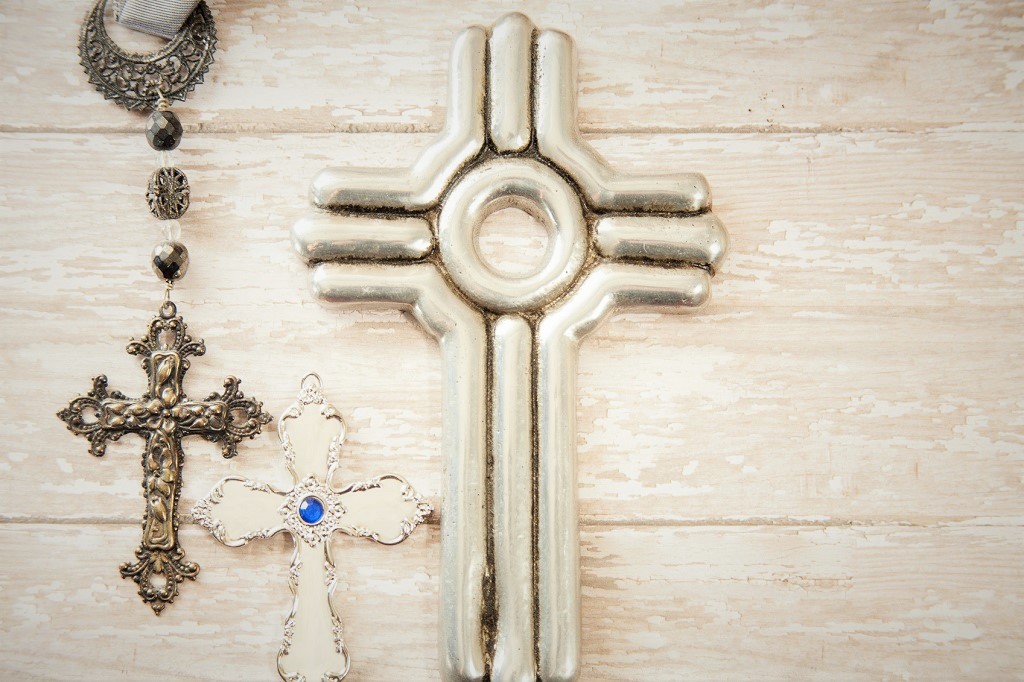Both the cross and the crucifix are the two of the most identifiable symbols of Christianity. No matter the setting, the country, the building, a cross or a crucifix marks that place as Christian. To see someone wearing a cross or a crucifix also identifies them with faith (for now, let’s set aside pop stars who flash these as mere jewelry.)
Yet, there are differences between a cross and a crucifix, ones so distinct that even a small child can manage to point them out. Even more distinctly, a crucifix is generally identified with the Catholic and Orthodox traditions, and a cross with Protestant. So, why the difference?
For non-Christians, these symbols can seem odd, at the very least. The cross is an instrument of death. It seems, to non-believers, the same as wearing a small electric chair on a chain around one’s neck. Even the early Christian community preferred not to use the cross as a symbol of faith because it was still being used in the torture and death of people. With the passage of time, though, the cross ultimately stands as the instrument of our salvation. It is the beginning of the end of death’s eternal hold on us.
Eventually the Christian community came to grips with the cross, but initially only as a symbol of triumph. In this form the cross had no corpus (figure of Christ) but was elaborately decorated and often even jeweled to represent Christ’s victory over death that made an object of shame into a beautiful thing. This type of cross is called a crux gemmata, and it was the first widespread form of the cross in Christianity.
The most marked difference between a cross and a crucifix is the corpus or body of Christ on a crucifix. Some Protestants object to the crucifix because of the belief (which we Catholics share!) that Christ is resurrected, not still on the cross and thus, (some believe) He should not be depicted that way. Others find the prominent Catholic use of the crucifix in our churches and homes borders on idolatry.
Of course, Catholics use both symbols frequently. While the crucifix holds a prominent place in most churches, you’re just as likely to see a simple cross in use by Catholics. For instance, many bishops choose to use the cross, rather than a crucifix, as their pectoral cross. Many Catholics choose to wear a cross as a symbol of their faith.
It should also be noted that most crucifixes include the sign INRI across the top. INRI is the Latin abbreviation for “Iesus Nazarenus, Rex Iudaeorum” or Jesus the Nazarene, King of the Jews. Recall in the Gospel of John:
Pilate also had an inscription written and put on the cross. It read, “Jesus the Nazorean, the King of the Jews.” Now many of the Jews read this inscription, because the place where Jesus was crucified was near the city; and it was written in Hebrew, Latin, and Greek. So the chief priests of the Jews said to Pilate, “Do not write ‘The King of the Jews,’ but that he said, ‘I am the King of the Jews.’” Pilate answered, “What I have written, I have written.”
St. Rose of Lima said, “Apart from the cross there is no other ladder by which we may get to heaven.” Catholics understand that both the simple cross and the crucifix are symbols of our faith, helping us to recall Jesus’ great sacrifice for us. Both give us a profound visual reminder of His Death and Resurrection, His sacrifice and His triumphant annihilation of sin and death. Yes, there are differences, but Catholics should hold both signs in high esteem, acknowledging both as powerful reminders of the Truth that is Christ.
